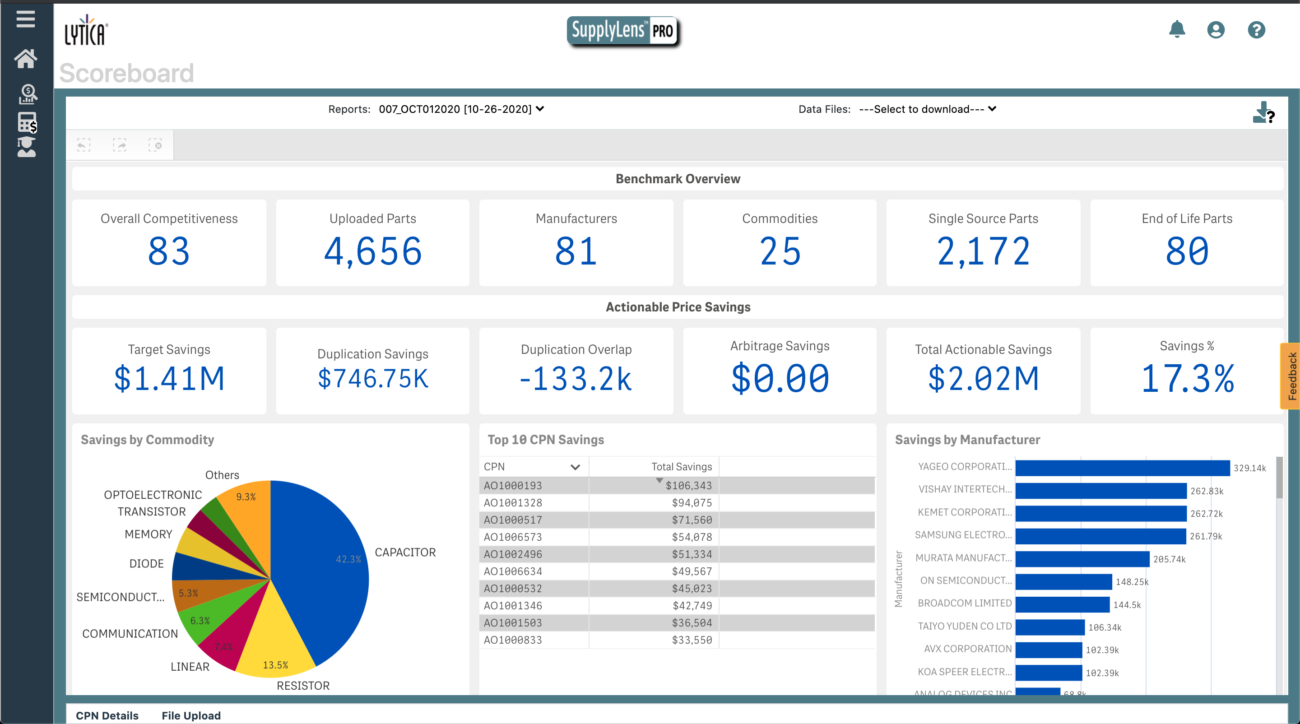
With the evolution of Lytica’s products from our legacy tools to the establishment of SupplyLensTM Pro, we continue to see similar technology questions from new and existing customers. In this blog, we’re sharing three common FAQs the Customer Success department sees.
- How does volume affect Lytica’s Target Pricing methodology?
Bradley’s Law is fundamental to the technology behind Lytica’s products. Lytica has unparalleled visibility into electronic component pricing. As such, we can debunk the common misperception that price is directly related to volume. At the component level, there is no positive correlation between the two. Lytica attributes the randomness of component-level pricing to both Supply Chain complexity within the industry and the notion that pricing is the function of many variables – not merely volume.
Supply Chain Complexity refers to the complex and “arms-length” style Supply Chain which is highly secretive and vast. With such a large number of component suppliers, there are many permutations and combinations of electronic solutions. In addition, the industry is inherently deflationary thanks to Moore’s Law.
Many variables impact component prices. Bradley’s Law – which states that a company can expect to pay a price commensurate with their competitiveness within a particular commodity – underpins our pricing technologies and considers many variables that can impact price, in addition to volume. Lytica considers variables such as commodity spend, channel, geography, alternate sources and many more factors in pricing. Ultimately, Lytica provides the science and your buyers provide the art in negotiations.
Rather than focus on volume, think in terms of how badly this supplier wants my business and why as well as how much do I need this supplier and why. The interplay between these forces results in your price.
2. Where do we get our information?
Lytica is the guardian of the world’s largest, independent source of peer pricing data from our community of benchmarking clients. With a constant influx of current data from benchmarking customers, we have true market visibility that is not offered by internet aggregators or distributor websites. We anonymize and analyze client pricing versus our database for comparison and computation of competitiveness scoring.
In addition, Lytica has lifecycle data source partners and makes use of artificial intelligence and machine learning to accelerate our data collection and put it into action. Our advanced technology efforts enable us to accurately provide lifecycle information and alternative part identifications at a form, fit and function equivalent level.
3. If a part doesn’t show in the SupplyLens™ Spend Benchmark plugin or have a price in the Price Estimator plugin, what can I do?
Spend Benchmarking is an assessment that identifies the most outlying priced parts – meaning those furthest from your competitiveness level – as Target Savings. This exercise also shows savings and risk from your own BOM in the form of Arbitrage Savings, Duplication Savings, Single Source Risk and End of Life Risk. Within Target Savings, we don’t show every possible saving, but rather the parts where you stand to make the biggest savings.
In Price Estimator, we identify 3 different buckets of results – Priced & Matched, Matched but Insufficient and Unmatched. If you encounter Matched but Insufficient, we do recognize the parts, we just do not have enough unique price points to suggest a statistically significant price today. If you keep this part in your window over time, it may receive pricing updates and you can refresh pricing in the platform window. If your part is unmatched, we do not recognize that part number which may be indicative of dirty data. Check for erroneous characters, extra text strings or perhaps use the single part search bar to begin typing and find a similar part. If this happens on a large number of parts, reach out to your CS contact for additional tips.
The Customer Success Department at Lytica was formed to forge and foster relationships with our customers to bring the best experience with Lytica technologies. The team is continually seeking opportunities to collaborate with our World Class customers on product ideas and feature sets for future products and releases. We are looking forward to continuing customer dialogue into 2021 having fostered tight-knit relationships with many customers throughout 2020.
Please contact the Customer Success Team directly if you have questions, or would like to set up a conversation or training session.



